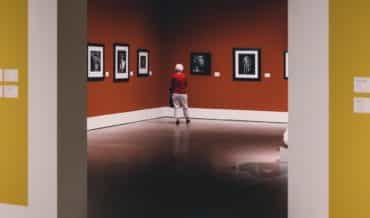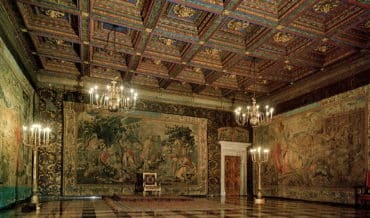Polish name for tapestry is “arras”, the word came from the city Arras in northern France, which was famous for its weaving workshops. The Wawel castle tapestry collection counted 360 pieces. They were used as a decoration in royal apartments starting from the XVI century. First tapestries were brought by queen Bona, but more significant contribution into the new collection made her husband king Sigismund I the Old. During his life he ordered tapestries in Antwerp several times and his private collection counted 108 pieces. Following rulers were completing the collection. Their orders were well considered, they were requiring the specific stories that were supposed to be pictured, as well as the exact sizes of the tapestries adjusted to the walls in the palace where they were supposed to hang. The measurements of some tapestries were reaching even 5 x 9 metres. There are three main topics of the pictures in Wawel collection: Bible, landscapes and animals, grotesque scenes and royal coats of arms.
During the last 450 years the tapestries were changing their owners several times, mostly because of the local political conflicts, wars and occupants. For the last time tapestries left Poland in 1939. To save the collection they were evacuated to Canada and were brought back to Poland in 1961.
At this moment there are 136 pieces in the collection of Wawel Castle Museum. To prevent their damage only few dozens of tapestries are exposed at the same time. Fortunately the exhibition is changed quite often.


